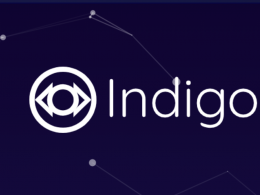The proof-of-stake algorithm, PoS, is a consensus protocol for distributed networks. It secures the blockchain by proof-of-possession of your cryptocurrency to validate the information recorded on it.
The proof-of-work system, PoW, validates your records with computational power work, which requires input cost.
Proof-of-stake (PoS)-based blockchains aim to overcome the scalability and consumption efficiency limitations of the proof-of-work (PoW) paradigm, which underlies the security of several major cryptocurrencies, including Bitcoin.
The advantage that the ledger structure in PoW has, is that it uses the information available in the genesis block. None of the existing PoS-based blockchain protocols can realize the ledger functionality under such dynamics.
A blockchain is the storage of the ledger. Each block contains the records of the transactions recorded in the ledger at a given point in time. If you try to take a look at the blockchain in its entirety, you would only see a consistent and immutable line that expands infinitely forward. This is because the blockchain is designed to be a succession of blocks that grow indefinitely.
There are currently almost 700 thousand blocks on the Bitcoin blockchain, and over 6 million blocks on the Cardano blockchain.
Most of us, as blockchain users, will be most interested in what is happening here, where new changes are being applied to the distributed ledger. Depending on how active participants are cooperating to maintain the distributed ledger, (depending on the consensus algorithm) the blockchain head may look more or less broad, more or less messy.
Branches may appear, sometimes short-lived, sometimes seemingly random. All blockchain protocols are intended to be short-lived and discard certain blocks to maintain a single main chain, but sometimes they may persist for longer than preferred or expected.
We have already seen how explicit forks occur in other blockchains that have taken on a life of their own, and built their own ecosystem. These are competing variants of the ledger, and hopefully the blockchain protocol will help resolve them fairly quickly.
From the user’s perspective, these competing variants of the timeline are not necessarily relevant. Often, these snapshots intersect in the changes they apply to the ledger, and some transactions may appear in both variants (although this is not always the case). With these competing variants, eventually the blockchain may operate what is known as a rollback. In essence, a rollback is the blockchain simply “changing its mind” (based on predefined rules) about which variant is preferred.
These rollbacks are annoying, create unnecessary stress on the part of the user, and degrade the overall UX by several orders of magnitude. Some blocks seem to disappear from blockchain browsers, transactions go unconfirmed in the wallet, and previously confirmed transactions are suddenly deleted because they were not added to the branch that ultimately became preferred. While this may be an industry standard in the space, it is clearly something that needs to be addressed in the future as blockchain adoption increases.
To address this, the dcSpark team proposes a new PoS-based protocol, “Ouroboros Genesis” which adapts one of the latest cryptographically secure PoS-based blockchain protocols with a novel chain selection rule. The rule allows new or disconnected parties to join, and securely bootstrap their blockchain from the genesis block without any trust advice – such as checkpoints – or assumptions about past availability. Thus, the blockchain protocol can “bootstrap from genesis”.
IOHK has published the research paper in February 2019: Ouroboros Genesis: Composable Proof-of-Stake Blockchains with Dynamic Availability
Let’s assume a new blockchain, that in the genesis block we would have a state of the ledger, and then the following states, for each incorporated block.
As I explained above, sometimes there are competitive blocks, and therefore competitive states, and from time to time small branches are formed along the main chain. Each of these are technically valid states of the ledger, and while consensus is supposed to ensure that these variations are short, they may also become more persistent and this is undesirable. I will graph this for understanding:
So, to change to a new branch, a rollback, is the fastest thing you can do. You simply select the state you want.
To address these issues, the development team presents its proposal in Catalyst’s FUND6, the Multiverse.
The Proposal: The Multiverse
The Multiverse is a new approach to reading the state of blockchains. It allows nodes to participate in different branches of a chain.
It is tracking blockchain states across different timelines.
It gives nodes a competitive advantage by maintaining, and eventually participating, in the different branches of a chain. This has cascading effects across the entire stack, where there are several pieces of core ecosystem tools, such as blockchain explorers, that will be able to benefit significantly as well.
Finally, this also translates into a better end-user experience, as wallets can maintain state, directly, through the Multiverse data structure.
The Development Team
The proposal is presented by dcSpark. The company was founded by Sebastien Guillemot, Nicolas Arqueros and Robert Kornacki.
Sebastien Guillemot
After working at Microsoft, he joined EMURGO (Cardano’s Consensys) as VP of Engineering and Product Manager at Cardano, where his team built products that reached 6-digit active user numbers and led the development of SDKs used by large companies such as Coinbase.
Nicolas Arqueros
He has experience in both founding and mentoring many successful startups during his career. He was previously the CTO of EMURGO (Cardano’s Consensys) and is currently a member of the Board of Directors of the Cardano Foundation and senior investment advisor to SOSV.
Robert Kornacki
Started as a fellow at dLab (blockchain accelerator program) and later joined the Ergo Foundation as a board member, as well as EMURGO (Cardano’s Consensys) as Head of Research, where he developed design patterns and smart contracts that manage millions of assets.
He recently joined Nicolas Di Prima, as Chief Engineer and Cryptographic Engineering specialist, who worked on the ancestor of Yoroi: Icarus Wallet and the successful work on the delivery of the first implementation of Ouroboros Praos: Jörmungandr, the node that powered the ITN. Most recently led the entire development of Cardano’s Catalyst voting platform.
Funding Requested: USD 100,000
You can view the proposal on Catalyst.
Video: Cardano stake pools affect dApp user experience
This article was written in Refine Stage and may have changes from the developers up to the Stage, which is ASSESS.









